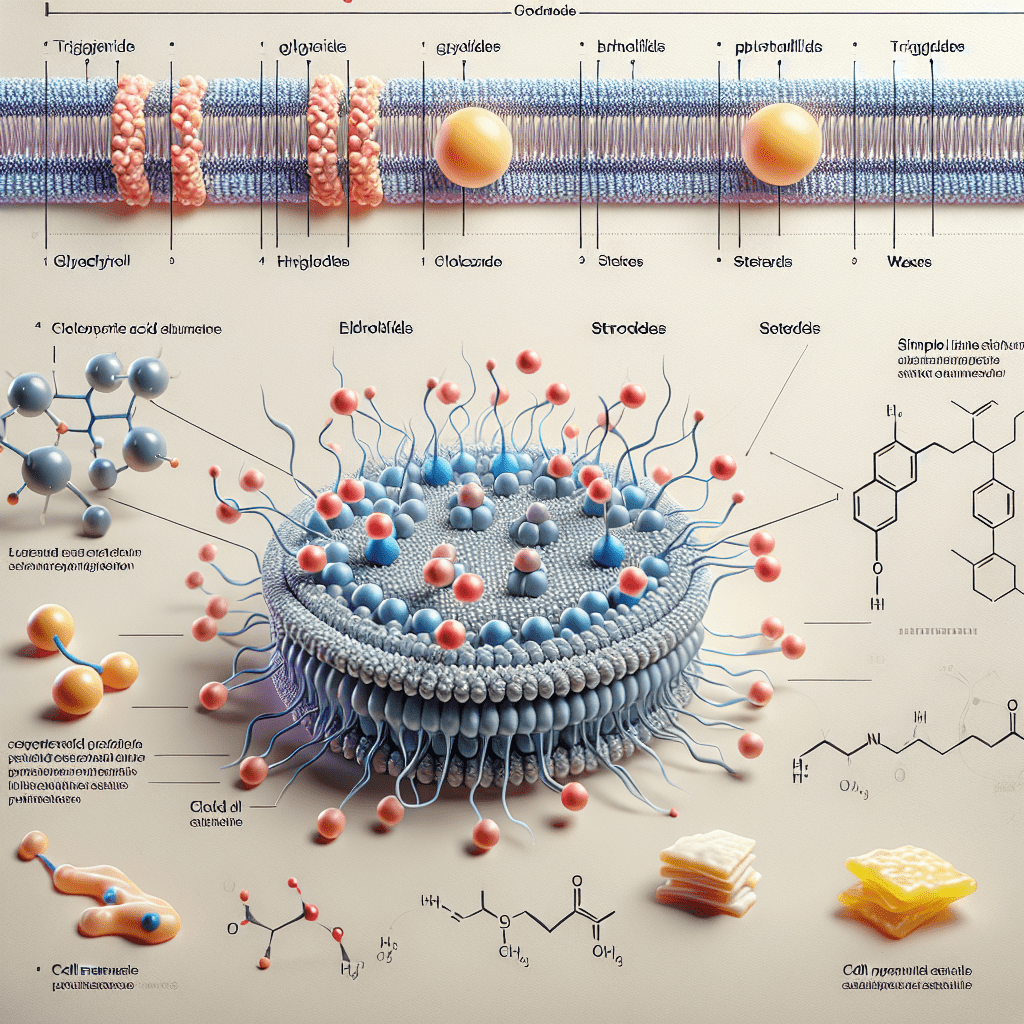Understanding Lipids: Functions, Classifications, and Importance in Biology
Introduction to Lipids
Lipids are a diverse group of organic compounds which are insoluble in water yet soluble in organic solvents like ether and chloroform. The insolubility arises from the hydrophobic or nonpolar nature of lipids, which allows them to play a variety of roles within biological systems. Their functions are pivoted on their structural diversity, from serving as key components of cell membranes to acting as signaling molecules.
Categories of Lipids
Lipids can be broadly categorized into several classes:
Triglycerides (Fats and Oils):
Triglycerides are formed through the binding of glycerol and three fatty acids. They are the main form of stored energy in living organisms, particularly evident within adipose tissue in animals.
Phospholipids:
These lipids possess a phosphate group and are crucial elements of biological membranes, contributing both the structural integrity of cells and the regulation of cellular traffic.
Steroids:
Characterized by a multiple-ring structure, steroids have various forms such as cholesterol, which is vital for cell membrane structure and is a precursor for steroid hormones like testosterone and estrogen.
Waxes:
Comprising long-chain fatty acids linked with long-chain alcohols or carbon rings, waxes provide protective coatings to plants and animal fur or skin against water loss and other environmental damages.
Functions of Lipids in Biological Systems
Energy Storage:
Long-term energy requirements are efficiently met by lipids due to their high energy content, with triglycerides particularly being a compact and rich energy source.
Cell Membrane Structure:
Phospholipids form the fundamental architecture of cellular membranes, establishing a hydrophobic barrier that distinctively separates the cell’s internal components from the extracellular environment.
Signaling molecules:
Lipids like steroids act as hormones which travel through the bloodstream conveying messages that regulate physiological processes. Phospholipids can also participate in signal transduction processes within cells.
Insulation and Protection:
For many organisms, lipids provide physical protection and insulation from their environment. This is observed in the layers of fat found beneath the skin, or in plant cuticles that minimize water loss.
Lipid Metabolism
Digestion and Absorption:
In humans, lipid digestion predominantly happens in the small intestine with the aid of enzymes called lipases while emulsification by bile salts allows fat to mix more effectively with water.
Biosynthesis:
Organisms have metabolic pathways that contribute to lipid biosynthesis, which is essential for producing the cellular membranes and signaling molecules necessary for survival.
Oxidation:
When required for energy, fatty acids undergo β-oxidation leading to the production of ATP. This process is carried out in mitochondria in eukaryotic cells.
Lipids and Health
Associated with diet and health, lipids play duplicitous roles:
Beneficial Lipids:
Unsaturated fats (particularly omega-3 fatty acids) found in fish oils and certain plant oils can have beneficial effects on heart health, inflammation, and cognitive function.
Harmful Lipids:
Overconsumption of saturated fats and trans fats may contribute to an increased risk of cardiovascular disease by leading to higher levels of low-density lipoprotein (LDL) cholesterol.
